2018 Summer Research Grant Awardees

Dr. Sutirtha Bagchi
Department of Economics
Villanova School of Business
Project Title: The Effects of Varying Partisan and Gender Composition of School Boards on School Budgets
Given my interest in topics of state and local public finance, a research question that has been of interest to me is the extent to which elections affect spending by local governments in the U.S. I am aware of some work that had been conducted on this topic examining the effect of partisan (and gender) composition of mayors on city budgets (e.g. Ferreira and Gyourko (2009) and Gerber and Hopkins (2011)). No paper has however examined such questions in the context of spending on K-12 education – the most significant category of spending by local governments. This is because in the U.S. context, K-12 education is not under the purview of city governments (and mayors) but are the responsibility of school districts (and school boards) which are legally independent entities. This is an important gap in the literature that I am hoping to fill; I intend to write the very first paper examining the effect of partisan composition of school boards on budgets and on other measures that we might care about such as school performance on standardized tests. In other words, does it matter for budgets and student outcomes whether an elected school board is majority-Democratic or majority-Republican? Currently we simply do not know the answer to that question.
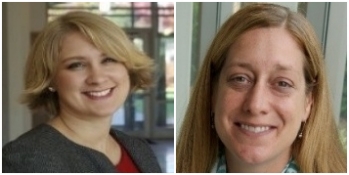
Dr. Meredith Mackenzie
Dr. Sherry Burrell
College of Nursing
Project Title: Health-Related Quality of Life in Cancer and Non-Cancer Patients in Medicare Managed Care
In 2016, there were 15.5 million adult cancer survivors alive in the United States and this number is predicted to grow to 20.3 million by 2026. Currently, older adults account for 75% of all cancer survivors. In 2003, a study found that older adult cancer survivors experience poorer health-related quality of life (HRQOL) than their age-matched peers without a cancer diagnosis and that HRQOL was linked to age, gender, income, education and comorbidities. Since this study, there have been dramatic advances in the field of oncology, including improvements in early detection, prevention and treatment. Cancer treatment, in particular, has evolved with refinements in surgical techniques and the development of novel therapies, such as immunotherapy. These advances have led to decreased mortality and increased survival time for cancer survivors. Although improvements in mortality associated with advances in cancer treatment are known, it is still unclear whether HRQOL has improved. To our knowledge, no study has examined whether differences in HRQOL between older adult cancer survivors and their age-matched peers without a cancer diagnosis have changed with advances in oncology care. Utilizing a large national database, we propose to explore whether the disparity in HRQOL between older adult cancer survivors and their age-matched peers persists with improvements in oncology care, and whether the trajectory and correlates of HRQOL have changed. The results from this study will enable the identification of older adult cancer survivors at higher risk for poor HRQOL and inform the development of interventions to improve HRQOL in this population.

Dr. Bryan Crable
Department of Communications
College of Liberal Arts and Sciences
Project Title: White Sacraments: Ralph Ellison and American Race Ritual
My USG-supported research project engages novelist and cultural theorist Ralph Ellison’s insights into white supremacy. This project will ultimately culminate in a book-length manuscript, White Sacraments: Ralph Ellison and American Race Ritual, to be submitted in 2019 to University of Virginia Press (the publisher of my 2012 book). However, the USG-supported project will allow me to carry out the necessary archival work to complete the book proposal and the first two chapters of the manuscript. This work will all be completed in Summer 2018, and will involve visits to the Jane Ellen Harrison Collection at the University of Cambridge in the UK, and to both the Ralph Ellison Papers and Library and the Stanley Edgar Hyman Papers (both of which are housed at the Library of Congress in Washington, D.C.). Following this archival work, I will draft the proposal and two chapters of the manuscript for submission to the University of Virginia Press, the publisher of my first book.

Dr. Alice Daily
Department of English
College of Liberal Arts and Sciences
Project Title: How to Do Things with Dead People: Temporal Conjecture and the Shakespearean History Play
The discipline of literary studies has been dominated for the past several decades by historicist criticism, a critical method that contextualizes literary artifacts in relation to the historical periods in which they were produced. Taking Shakespeare’s English history plays as its primary object of study, How to Do Things with Dead People declares a radical turn away from historicist criticism and its attendant assumptions about literary periodization and context. Seeking to introduce alternative critical methods, the book expands the history plays’ context beyond the immediate conditions of the fifteenth and sixteenth centuries to consider them within the ongoing human enterprise of representing and relating to the dead. I describe Shakespeare’s historical drama as, fundamentally, a reproductive technology by which living replicas of dead historical figures are animated and re-killed on stage. Considering the plays in such terms exposes their affinity with a transhistorical array of technologies for producing, reproducing, and looking at dead things—technologies like literary doppelgängers, funeral effigies, photography, ventriloquist puppetry, x-ray imagery, capital punishment rituals, and cloning. By situating the plays in this broader, interdisciplinary context—one that includes current as well as developing technologies—How to Do Things with Dead People deconstructs conventional period boundaries that mark off Shakespeare’s reproductive arts as substantively different from our own. The project thereby takes up questions beyond the conventionally defined field of Shakespeare criticism to model new directions for the broader discipline of literary studies.

Dr. Raul Diego Rivera Hernandez
Department of Romance Languages and Literatures
College of Liberal Arts and Sciences
Project Title: Book manuscript: "Victims in Resistance: Vulnerabilities in the Midst of the War on Drugs in Mexico" (in Spanish)
My book manuscript addresses the intersections between vulnerability and victimization in the context of the Mexican Drug War. From this perspective, I discuss the effects of political violence and the violence linked to drug-trafficking on the lives of journalists, migrants, and relatives of the murdered and disappeared. I focus on what I identify as “narratives of vulnerability” in fiction (novels) and non-fiction texts (journalistic chronicles and documentary films). By foregrounding victims’ points of view, these narratives offer a complex portrayal of the current political situation by denouncing the fusion of political and criminal violence as part of a “necro-political regime” (Mbembe, 2013). I analyze vulnerability as the extreme exposure of the body to harm produced by both state violence and the state’s neglect to protect citizens from criminal organizations, which forces populations to develop their own means to cope with violence. In my book manuscript, I examine the concept of vulnerability primarily from the perspective of feminist theories, and I question its negative associations with general ideas of victimization, powerlessness, and need of help. I claim that, in the context of the War on Drugs, vulnerability has the potential to transform fear and pain into collective actions of resistance enacted by specific vulnerable targets: journalists, undocumented migrants in transit, and the collectives of families searching for their disappeared loved ones.
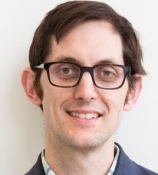
Dr. Joseph Drury
Department of English
College of Liberal Arts and Sciences
Project Title: Samuel Johnson and Enlightenment Science
Samuel Johnson is one of the most important and beloved figures in British literary history. Poet, moralist, critic, and compiler of the first modern English dictionary, Johnson was also immortalized in James Boswell’s "Life," a remarkable treasure trove of eighteenth-century wit and wisdom. Over the last forty years, literary scholars have explored his writings across many different genres on a range of topics, including politics, religion, moral philosophy, history, law, and medicine. My essay for the upcoming Oxford Handbook of Samuel Johnson redresses a striking omission in this scholarship, however, by exploring Johnson’s interest in the natural sciences. Though not a “scientist” in any modern sense, Johnson dabbled in chemical experiments throughout his life, kept up with the scientific developments of his day, and frequently deployed scientific terms and rhetorical devices in his writings. With the interdisciplinary study of literature and science reaching new levels of complexity and sophistication in recent years, the time is ripe to return to Johnson’s oeuvre and re-examine the place of the natural sciences in his life and thought and in Enlightenment literary culture more broadly. My essay reconsiders Johnson’s work in the light of recent theoretical developments in the history and sociology of science, and argues that, rather than a mere “popularizer,” Johnson should be seen as an active and critical participant in the work of establishing the epistemological authority of the new science.
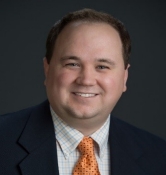
Dr. Bryan Eigenbrodt
Department of Chemistry
College of Liberal Arts and Sciences
Project Title: Development and Exploration of Advanced Anode Materials for Fuel Cell Operation with Biofuels
There have been recent strides in the fuel cell industry away from a hydrogen based energy system to a renewable hydrocarbon fuel, due to the high production cost and challenges associated with hydrogen storage. This generates a demand to develop and understand the fundamental science of new electrode catalysts and their ability to operate in these complex fuel environments. The proposed research will explore the catalytic and electrochemical properties of novel fuel cell anode catalysts adopting a perovskite crystal structure and their ability to operate in renewable alcohol atmospheres. Moving forward to exploring the chemical and materials properties of these materials will prove to be challenging. The high operating temperatures (>600°C) and inaccessible device architectures make it extremely difficult to validate proposed kinetic models by reason of lingering questions about elementary reactions occurring in the fuel cell during operation. Specifically, the use of novel in-operando X-ray absorption spectroscopy measurements will provide unprecedented understanding of the fundamental chemistry of these anode materials during device operation that could not normally be obtained from standard electrochemical measurements alone. The direct correlation between electroanalytical and spectroscopic techniques will provide insight into fuel cell chemistry that will significantly aid this field in the development of future fuel cell devices that are efficient and effective at operating on renewable fuels sources.

Dr. Lance Hannon
Department of Sociology and Criminology
College of Liberal Arts and Sciences
Project Title: Productive, unproductive, and counterproductive policing in Chicago: An analysis of stop-and-frisk hit rates
Can we make investigatory policing more efficient and more equitable? An increasing body of evidence demonstrates that (a) places vary in the degree to which investigative frisks uncover contraband and (b) places where police officers are better at successfully predicting when a suspect has contraband are also places where racial and ethnic minorities are less likely to be stopped and frisked. Recent statistical research analyzing data for New York City (NYC) has suggested that having officers follow simple evidence-based guidelines would both increase the efficacy of their frisks/searches and decrease racial and ethnic disparities in intrusive policing. The current project proposes replicating and extending these NYC-based analyses using Firth logistic regression models applied to a uniquely detailed dataset for the City of Chicago. The proposed project is informed by social psychological theories of procedural justice and motivated by the belief that the consequences of implicit racial bias are both predictable and preventable. The ultimate goals of this project are to contribute to the scholarly literature in this area and to affect policy.

Dr. Stacey Havlik
Department of Education and Counseling
College of Liberal Arts and Sciences
Project Title: Supporting the College Preparation of Homeless Students
The McKinney-Vento Homeless Assistance Act was recently reauthorized under the Every Student Succeeds Act (ESSA) to include a specific mandate that now requires local homeless liaisons and school counselors to provide tailored college readiness support for students experiencing homelessness. Despite the importance of their roles and recommendations under the law, there is scant research available on how these stakeholders serve homeless students in this capacity, with no research investigating how they are addressing the new McKinney-Vento college readiness requirements. Through qualitative methods, high school level counselors and local liaisons will be interviewed on their work with this unique population of students. This study will, therefore, bring to light how critical school personnel are supporting students experiencing homelessness in their college preparation and will lead to outcomes-based research investigating the effectiveness of specific programming and trainings for supporting their college preparation needs.
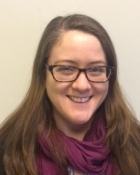
Dr. Melissa Hodges
Dr. Brianna Remster
Department of Sociology and Criminology
College of Liberal Arts and Sciences
Project Title: The Gendered Incarceration Wage Penalty
With approximately one in 100 adults currently incarcerated, incarceration has become a defining feature of American society. Because most incarcerated persons are eventually released, approximately 636,000 individuals exit prison annually and over five million Americans have been incarcerated during their lifetime. A robust literature finds that incarceration has varied and far reaching consequences long after individuals are released, including reduced wages. Although research finds that incarceration is associated with lower wages for men, it is unknown whether this extends to formerly incarcerated women, despite evidence that women experience the consequences of incarceration differently than men. Moreover, as the primary care givers for children, women’s post release wages have implications for intergenerational inequality. Analyzing data from the National Longitudinal Survey of Youth (NLSY79), this study investigates (1) the relative size of the incarceration wage penalty by gender and (2) whether the explanatory mechanisms for the penalty differ for women compared to men. Preliminary findings indicate that the net penalty for formerly incarcerated women is roughly double the size of the penalty for formerly incarcerated men. Moreover, there appear to be gender differences in the mechanisms shaping the wage penalty. These initial findings illustrate the need for more research that applies a gendered lens to the consequences of incarceration.

Dr. Jeremy Kees
Department of Marketing
Villanova School of Business
Project Title: A Higher Understanding of the Role of Branding in Shaping Consumer Beliefs and Risk Perceptions for Medical and Recreational Marijuana Products
Given recent legislation in 28 states (representing 60% of the US population) legalizing marijuana for medical and/or recreational use, research on topics related to marijuana product marketing such as packaging, labeling, branding, and advertising is both timely and important (BMI 2017). This research funded by the University Summer Grant Program will contribute to the understanding of how marketing elements on marijuana packaging interact to shape consumer attitudes and behavior. Using a theoretical framework drawn from the brand equity literature (Murphy 1990; Aaker 1991), two between-subjects experiments will be conducted to evaluate the role of product branding, product type, and product form for experienced and non-experienced users in states where recreational marijuana is currently legal. In Study 1, participants will view medical and recreational marijuana product packages with manipulated labeling elements. Analyses will examine predicted main and interaction effects on important outcome variables such as consumer product beliefs and risk perceptions. Study 2 will use a packaging experiment to examine the role of functional product differentiation in shaping consumer benefit and risk perceptions. This proposed research seeks to advance the understanding of important issues around marijuana marketing and make an original and significant contribution to knowledge for this under-researched topic. Findings from this project will provide public policy makers with much needed data as they develop legislation around how marijuana products can be marketed to ensure consumer understanding of both the product benefits and risks.

Dr. Nisha Kondrath
Department of Electrical and Computer Engineering
College of Engineering
Project Title: Design and Performance Evaluation of a Bidirectional SiC- Based Three-Phase Interleaved DC-DC Converter to Interface Energy Storage Devices in Microgrids
Microgrid is a power system that integrates local electric power sources, energy storage units, power conversion systems, and communication systems which operate in parallel with the utility grid (grid-connected mode) or independently as a stand-alone system (islanded mode) to supply a network of critical as well as non-critical local loads. Microgrids are expected to provide high-quality power with high efficiency, reliability, and security in both modes of operation, and should be economically viable. Integration of renewable energy resources and having reliable energy storage systems are critical in improving the stability, flexibility, robustness, power quality, and resiliency of the microgrid; especially in the islanded mode.
Bidirectional dc-dc power converters play a key role in interfacing distributed energy storage units such as batteries into the microgrid. These power electronic interfaces are expected to have high efficiency and high power density to operate at high power, while keeping the size small. Use of wide-band gap devices, such as Silicon Carbide (SiC) and Gallium Nitride (GaN) devices, in power electronic converters has shown to reduce losses and need for extensive thermal management systems in power converters. This research will focus on the development of a step-by-step procedure to design high-power multi-phase interleaved dc-dc converters with improved efficiency using SiC devices. As proof of concept, a 100 kW bidirectional three-phase interleaved dc-dc converter will be designed and simulated. Performance of the SiC based converter will be evaluated in terms of converter efficiency at different operating frequencies as well as temperatures.
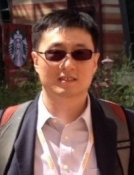
Dr. Bo Li
Department of Mechanical Engineering
College of Engineering
Project Title: 3D printing with polymer nanocomposites
With this University Summer Grant (USG), I propose to probe 3D printing technology to challenge well-established concepts in the traditional manufacturing methods of polymer nanocomposites (PNs). I will use a segregated conductive PN (sc-PN) as a demonstration system and deliver synergistically enhanced electrical and mechanical properties that were not previously achievable. This project will not only develop a new type of PN, but also help me gain fundamental insights into the 3D printing process of PNs. It will provide me with impressive research data that will be attractive to external funding agencies such as the Department of Defense (DOD), the National Institute of Health (NIH) and the National Science Foundation (NSF).
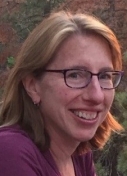
Dr. Jean Lutes
Department of English
College of Liberal Arts and Sciences
Project Title: The Lovelorn Column: Mass Print Culture and Mediated Intimacies in Modern America
This project discovers a revolution that unfolded, mostly unremarked, in a commonplace item tucked inside the world’s first mass-market newspapers. When American newspaperwomen invented the personal advice column in the late nineteenth century, they launched an enduring popular genre that changed conventions of emotional expression, created a vast imaginary collective of woman-identified wisdom, and provided a commanding new platform for women writers at a watershed moment for women’s rights. Yet the lovelorn column’s place in U.S. literary history has been almost entirely defined by a man writing about a man: Nathanael West’s satiric novella Miss Lonelyhearts (1933), in which a newspaperman takes over an advice column and immediately falls into despair because the task is so far beneath him—so trite, so hypocritical, so corrupt. Following West’s lead, generations of scholars have dismissed the genre as too contrived to warrant their attention and thus missed the telling paradoxes at the heart of the lovelorn column. The history of this widely circulated form has grown more consequential than ever, particularly in the current age of social media. My project, by treating the rise of the advice column as a phenomenon worthy of study, reveals the genre’s achievements in all their ambivalence. In summer 2018, I will finish my data collection on advice columns published in black newspapers and draft a major chapter on early advice columns by African Americans.
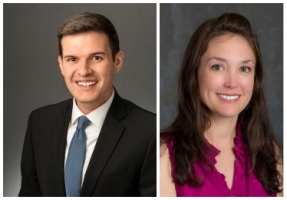
Dr. Jonathan Hubler
Dr. Leslie McCarthy
Department of Civil and Environmental Engineering
College of Engineering
Project Title: Investigation of Reclaimed Asphalt Pavement Properties for Sustainable Infrastructure
The goal of the proposed research is to evaluate the suitability of the beneficial reuse of reclaimed asphalt pavement (RAP) in civil engineering infrastructure, particularly for earth retaining structures prevalent on our nation’s highways and railroads. Currently, there is an overabundance of RAP, which has led to landfilling and stockpiling of this material. RAP has been used successfully in many pavement applications as a replacement of up to 40% of the virgin aggregate portion in new asphalt mixture designs and as an in-place recycled base material. However, the plethora of RAP materials make a feasibility study of use of this material for alternative uses (e.g., railroad substructure, retaining walls, bedding materials for pipes, insulation) necessary from a life cycle cost and sustainability perspective. The proposed research will advance the current understanding of the physical, mechanical, and hydraulic properties of RAP. Knowledge of these properties is critical for design of infrastructure, such as retaining walls and railroad embankments. The experimental findings of this study will provide guidance on the suitability of reusing RAP in infrastructure design.
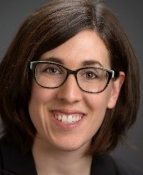
Dr. Kaitlyn Muller
Department of Mathematics and Statistics
College of Liberal Arts and Sciences
Project Title: Synthetic-Aperture Radar Modeling and Imaging Techniques for Anisotropic and Stochastic Targets
The goal of this project is to produce a proposal to submit to the Broad Agency Announcement: Research Interests of the Air Force Office of Scientific Research, Department of Defense. The proposal will outline projects in the area of synthetic-aperture radar modeling and imaging. Synthetic-aperture radar is a radar modality where the antenna(s) are mounted on one or more moving platforms such as aircraft. The antenna emits electromagnetic waves which scatter off of objects in an area of interest. The scattered waves received by the radar are then used to create images of the scene and ultimately detect/classify the objects. The main goals of this proposal will be to develop target specific mathematical models for scattered radar returns and then to use these to develop target specific imaging algorithms. In particular we will consider anisotropic targets, which are targets whose scattering returns are different depending on the look direction of the radar as well as objects whose radar scattering returns appear random to an analyst. These are typically natural scatterers, like ground surfaces, ocean surfaces, and foliage. These objects scatter radar waves in many directions and often obscure the returns of objects of interest. The mathematical models this proposal will address will be useful in many practical applications of interest to the Air Force. In particular we seek to address penetrating thick forest canopies with radar in order to image the scene beneath the canopy, and second to estimate the thickness of sea ice from radar returns.
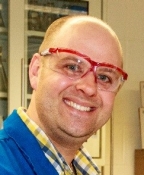
Dr. Jared Paul
Department of Chemistry
College of Liberal Arts and Sciences
Project Title: Energy from Water: The synthesis and study of metal complexes as water oxidation catalysts
Efficiently splitting water into its principle components of oxygen, protons, and electrons remains a significant challenge in sustainable energy chemistry today. The resultant electrons and protons from water splitting are termed "reductive equivalents" that can be used to make fuel sources. Ruthenium has been studied extensively for its ability to bind water, absorb light in the visible range, and ultimately oxidize water leading to great potential for solar fuel development. However, ruthenium must reach high oxidation states for water oxidation to occur and this is an energy intensive process. The aims of this project will look to fill the gaps in knowledge of linking the need for high oxidation states with the water oxidation process. The goal of this work is to synthesize novel ruthenium complexes that can reach higher oxidation states in a controlled manner using pH-dependent ligands and study the impacts that these ligands have on the structure and electronic properties of the metal.

Dr. Allison Payne
Department of Sociology and Criminology, Honors Program
College of Liberal Arts and Sciences
Project Title: Teacher Victimization: Trends, Correlates, and Relationship with Communal School Organization
Despite data showing that teacher victimization is at least as great a problem as student victimization, far less research exists regarding teacher victimization when compared to student victimization and overall school crime. Some examinations exist regarding trends and correlates, but this work is riddled with problems. Additionally, there is a particular dearth of research with regard to the application of criminological theory to explain the victimization of teachers. I will address this gap by investigating teacher victimization in a nationally representative sample of 37,497 teachers from 7,488 public schools in the United States. Basic trends and correlates of teacher victimization will first be examined, followed by the analysis of the hierarchical relationship between communal school organization and teacher victimization.

Dr. Delia Popa
Department of Philosophy
College of Liberal Arts and Sciences
Project Title: The Split of Subjectivity. A Phenomenological Perspective on the Problem of Identity
Various perspectives in contemporary philosophy highlight the problem of a split affecting the subjects of experience we are, explaining our difficulty to approach deep convictions or compulsory actions in a rational manner. Addressing this problem, the research project examines the hypothesis of an embodied “self” affectively related to other selves before any possible relation to its own consciousness. In order to ground this hypothesis, a firm distinction between self and consciousness is introduced, on basis of rigorous phenomenological descriptions. The goal of the research project is to explore the consequences of this inner split between self and consciousness for the problem of identity. Moreover, the project will consider the thesis of an antagonistic movement within subjectivity determining the orientations of personal and collective identity.
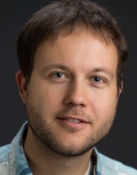
Dr. Andrej Prsa
Department of Astrophysics and Planetary Science
College of Liberal Arts and Sciences
Project Title: Rigorous testing of asteroseismic scaling relations using eclipsing binary stars
Determining fundamental stellar parameters – masses and radii – is very difficult because the stars are at (quite literally) astronomical distances. With the exception of a handful of nearby objects, we cannot resolve the physical size of stars. The only tractable way to measure masses and radii is by using the systems of two stars where the orbital plane is aligned with our line of sight, resulting in mutual eclipses. From well understood laws of gravity we obtain the masses, and from the eclipse geometry we obtain the radii. Even though 60% of all stars comprise binary and multiple systems, astronomers are on a constant lookout to find new techniques to measure fundamental stellar parameters. One promising new method stems from the study of stellar pulsations. The so-called scaling relations connect the frequencies and spacings of stellar pulsational modes with the fundamental stellar parameters. This work will focus on a sample of red giant stars in eclipsing binary stars that were observed by the Kepler satellite. We have predictions of their masses and radii from scaling relations, and we can measure the same quantities accurately using eclipsing binary models. By comparing the results of the two methods, we will be able to validate (or reject) scaling relations as a novel method for determining fundamental stellar parameters.

Dr. Megan Quigley
Department of English
College of Liberal Arts and Sciences|
Project Title: T. S. Eliot among the Novelists
Expatriate poet Ezra Pound—brilliant, flawed, voluble—hated the notes appended to the most famous 20th-century war poem, The Waste Land, written by his friend T. S. Eliot. While Eliot accepted many of Pound’s other editorial decisions, the notes have always remained, canonizing The Waste Land as a strange literary hybrid: lyric masterpiece marred by academic jargon. But what if the notes also turn the poem into a novel? And how would the history of literary scholarship be different if we rejected the Eliot-Pound divide of modern poetry versus fiction, and we instead read Eliot’s “poem” as the natural development of the novel?
This summer I will tackle my new book project which will demonstrate Eliot’s fascination with prose fiction and its impact on his own verse and plays. While scholars have studied singular novelists and their relationship to Eliot, no one has yet to bring together Eliot’s mass of writings on fiction, narrative and formalist theories, and the history of literary modernism. With the death of Eliot’s widow in 2012 and the publication of over a dozen new volumes of Eliot’s poetry, prose, and letters in the subsequent years, the time is ripe to break the nearly fifty-year hold of the Eliot estate on Eliot’s reputation. Eliot Among the Novelists will present a crucial and timely reassessment of Eliot, revealing that one of the most influential critics and figures in 20th-century literature harnessed the form and popularity of fiction to a classical literary tradition to create modernist poetics.
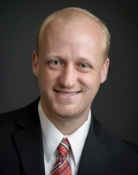
Dr. Benjamin Sachs
Department of Psychological and Brain Sciences
College of Liberal Arts and Sciences
Project Title: Examining serotonin deficiency as a possible risk factor for antidepressant-induced increases in suicidal-like behavior in adolescents
Approximately 40,000 individuals in the United States commit suicide each year, and another 650,000 require emergency medical care due to a suicide attempt. The neuropsychiatric disorder that is most commonly associated with suicidal behavior is major depression, a condition that is typically treated with selective serotonin (5-HT) reuptake inhibitors (SSRIs). While these drugs are generally considered safe for most individuals, their efficacy is limited, and their use is associated with several rare but serious consequences, including an increased risk of suicidal behavior among adolescents and young adults. Unfortunately, we currently have no way of identifying individuals at risk for SSRI-induced increases in suicidal behavior. The current project seeks to use genetically modified mice to test the hypothesis that impaired brain 5-HT synthesis contributes to SSRI-induced increases in suicide-related behaviors by preventing the ability of SSRIs to regulate a key signaling pathway implicated in suicide, the GSK3 pathway. We further hypothesize that direct inhibition of GSK3 using lithium, unlike SSRIs, will remain effective and reduce suicide-related behaviors in 5-HT-deficient animals. We will evaluate these hypotheses using mice that have been genetically modified to display 60-80% baseline reductions in brain 5-HT. Although suicide is a uniquely human behavior, suicidality has been closely linked to impulsive-aggression, which will be the focus of the current studies. Our results have the potential to provide new insight into the neurochemical basis of SSRI-induced aggression and impulsivity, which could shed light on the molecular mechanisms leading to suicidal behavior associated with SSRI use.

Dr. Justinus Satrio
Department of Chemical Engineering
College of Engineering
Project Title: Design and Construction of a Semi-Continuous Mini-Reactor System for Fundamental and Applied Studies on Lignocellulosic Biomass Conversion via Hydrothermal Pyrolysis Process
Lignocellulosic biomass or lignocellulose is the most abundant biomass on earth which is considered to be the most promising carbon source for the production of biofuels since it is relatively inexpensive, readily available and its production does not compete with the production of food crops. In this proposal, a thermochemical process called sub-critical hydrothermal pyrolysis (HTP) is used for converting carbon in biomass into liquid bio-oil and solid hydrochar which subsequently can be used for bio-fuel and chemical production. Under sub-critical condition, water will stay in liquid form and act as a reaction media to promote the breakdown and cleavage of chemical bonds in the solid biomass. The advantage of HTP process over is its ability to process wet biomass, such as food waste, which otherwise is expensive to process due to high energy requirement to dry the organic carbon materials.
The proposed 2018 summer work will be focused on the development of a small semi-continuous HTP reactor system which will be crucial for the expansion of research scopes on the on-going hydrothermal pyrolysis (HTP) research at the Biomass Resources and Conversion Technologies (BRCT) laboratory in the Chemical Engineering Department. The new reactor system will enable the BRCT research team to perform proof-of-concept study on the 2-step HTP process which is designed for optimally converting lignocellulosic biomass into sugars, lignin-derived bio-oil and/or hydrochar. The HTP process research has been performed by collaboration with the Gray Brothers Inc., which is a waste management company based in Chester County, PA.
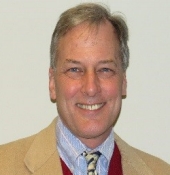
Dr. Michael Smith
Department of Chemical Engineering
College of Engineering
Project Title: High Temperature CO2 Sorbents for Improved Hydrogen Production
Lithium orthosilicate has been evaluated as a CO2 capture agent in sorption–enhanced water-gas shift reaction used to produce hydrogen. The issue is that while adsorption of CO2 is a surface phenomena, lithium orthosilicate forms large-particle, bulk-phase materials. The majority of lithium and silica atoms are far from the surface, and once the reaction products cover the surface, adsorption stops. Our approach to improving reversible CO2 sorption is to create a surface lithium-silicate structure on a mesoporous silicate such as SBA-15. We propose to develop these materials by atomic layer deposition or incipient wetness of suitable lithium precursors onto mesoporous silicates. Critical needs for this effort to be successful include analysis of the composition and molecular structure of these novel materials. Many of these characterization techniques are available at the Fritz-Haber Institute (FHI) in Berlin Germany. We anticipate taking our novel lithium silicate materials to FHI this summer for advanced characterization analysis, including high-resolution electron microscopy and Raman spectroscopy. If successful, this project will allow for sorption-enhanced, high-temperature WGS operations, potentially leading to a significant process intensification of hydrogen production, a demanding and critical need for our human species to develop sustainable energy technology in the coming century.

Dr. Joseph Toscano
Department of Psychological and Brain Sciences
College of Liberal Arts and Sciences
Project Title: Psychophysical methods for assessing auditory neuropathy
The National Institute on Deafness and Other Communication Disorders estimates that 15% of American adults have some degree of hearing difficulty, and the World Health Organization estimates that up to 50% of young adults in developed countries are at risk for noise-induced hearing loss. These statistics reflect a pressing need for tools that can detect hearing loss at its earliest stages, offering a better chance for successful treatment outcomes. However, many listeners who pass standard hearing tests still experience hearing difficulty, particularly for understanding speech in noisy environments. These are sometimes described as cases of “hidden hearing loss,” and they can be difficult to diagnose, leading to mismanaged treatment. At present, there are no reliable measures that specifically detect hidden hearing loss in human subjects.
This project aims to address this issue using psychophysical measures that capture processes hypothesized to be impacted by hidden hearing loss and investigating whether these measures relate to listeners’ self-reported hearing difficulty and speech recognition. Specifically, by measuring listeners’ ability to detect differences in sound levels, we expect to find that those with hidden hearing loss have greater difficulty distinguishing sounds at levels commonly encountered in conversational speech. This would provide a measure that more closely corresponds to the contexts in which these listeners experience hearing difficulty. If successful, the results of this project could lead to new clinical tools for diagnosing and ultimately treating hidden hearing loss in human subjects.
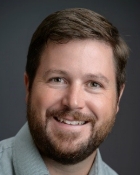
Dr. Nathaniel Weston
Department of Geography & the Environment
College of Liberal Arts and Sciences
Project Title: The Future of “Blue Carbon” in the Delaware River Estuary
Tidal marshes are among the world’s most productive ecosystems, and are an important component of “blue carbon,” the carbon stored in oceans and coastal zones globally. Blue carbon storage reduces atmospheric greenhouse gas concentrations and mitigates climate change. Much of our current understanding of coastal wetland carbon storage is derived from studies in salt-marshes, yet in many coastal ecosystems tidal freshwater and low-salinity marshes account for a significant fraction of the total marsh area. Tidal freshwater marshes have received far less attention from the scientific and management communities. The extent and distribution of marsh (both saline and fresh) is projected to change due to sea-level rise and salinity intrusion associated with climate change, with concomitant change in coastal blue carbon storage. This project will produce estimates of current and future blue carbon storage in tidal marshes throughout the Delaware Estuary by coupling field-based measurements of carbon gas exchange (carbon dioxide and methane) and carbon storage (from sediment cores) across marsh types with spatially-explicit modeling of change in marsh extent under various scenarios of sea-level rise and salinity intrusion. This analysis will provide an evaluation of the total amount of carbon sequestered each year, and budget for any offset in sequestration due to methane release. This work will substantially increase our understanding of blue carbon storage dynamics in a relatively large coastal marsh system, provide a framework for carbon budgeting for coastal marsh systems more generally, and deliver projections of current and future blue carbon storage in a changing world.

Dr. Jie Xu
Department of Communications
College of Liberal Arts and Sciences
Project Title: The Relative Effectiveness of Gain-Framed and Loss-Framed Messages in Charity Advertising: Meta-Analytic Evidence and Implications
Re-emerged as an important topic in communication, charity advertising (Chang & Lee, 2010; Das, Kerkhof, & Kuiper, 2008) applies various persuasive strategies to create messages that benefit the well-being of individuals and society at large. Among the extensive work done on donation appeals, the effect of message framing has long intrigued scholars and energized practitioners. Research for message framing, as applied to charity advertising, is underexplored and the support is largely mixed. Accordingly, this project aims to conduct a meta-analytic analysis on the relative effectiveness of gain-framed and loss-framed appeals in charity advertising. Meta-analyses enable researchers to estimate effect size and identify potential moderators from the totality of available data, while correcting for such statistical artifacts as sampling error (Hunter & Schmidt, 2004). Compared to narrative analyses and thematic reviews, meta-analyses can potentially yield more objective results. They are statistically more powerful and less biased than an individual study (Hunter & Schmidt, 2004). This project seeks to take a meaningful step in advancing theoretical understanding of framing effect, which allows scholars to make more confident recommendations to practitioners.
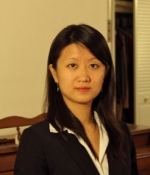
Dr. Wenqing Xu
Department of Civil and Environmental Engineering
College of Engineering
Project Title: Engineering Reactive Carbon Amendments for Effective in-situ Degradation of Contaminants in Soils and Sediment
The U.S. Environmental Protection Agency (EPA) estimates that 10% of all sediments underneath U.S. surface waters (1.2 billion cubic yards) contain concentrations of toxic contaminants high enough to pose significant concerns for aquatic organisms and human health. Currently, dredging is the benchmark remedial technology used to minimize these risks, by permanently removing pollutants from the contaminated sites. However, this remedial practice is increasingly unsustainable. The costs for cleaning up approximately 350,000 contaminated sites in the United States over the next 30 years are estimated at $250 billion. Furthermore, this dredging process can be difficult to implement, both because of site-specific geological constraints as well as the associated re-suspension of contaminants to the water column during the dredging process. To address these challenges, I propose to develop effective carbon amendments that can be mixed with contaminated sediments on site and, therefore, foster the in-situ degradation of pollutants through the utilization of naturally occurring reagents.

Dr. Mark Sullivan
Department of History and Art History
College of Liberal Arts and Sciences
Project Title: The Darby School of Art:
A Forgotten Chapter in the History of American Art
Most surveys of the history of American art discuss the development of Pennsylvania Impressionist painting (in the late 19th and early 20th centuries) as evidence of the country's growing ability to create a mode of landscape painting that was uniquely American. New Hope, PA, is usually seen as the birthplace of Pennsylvania Impressionism; but this study will show that the Darby School of Art, in Fort Washington, PA, was just as important as New Hope in the development of both Pennsylvania Impressionism and its successor, early American modernist painting. I will also demonstrate that the Darby School was one of the first American institutions fully to support the idea of women as professional artists.
